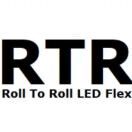The definition correlated color temperature
Color temperature is a way to measure the quality and color of light. Kelvin (K) measured it, which is unit of absolute temperature. The higher the Kelvin value, the cooler or bluer the light appears. Conversely, lower Kelvin values signify warmer, more red-orange light.
My customers said they frequently use color temperature to describe the appearance of light sources such as incandescent bulbs, fluorescent lamps, and LED lights. Understanding color temperature is important when selecting lighting for homes, offices, and outdoor spaces, as it can affect the mood, ambiance, and overall feel of a space.
In short, color temperature is a crucial aspect of lighting. Choosing the right color temperature can make all the difference in creating the desired atmosphere and functionality of a space.
The classifications of CCT
Color temperature is typically classified into three categories: warm light, neutral light and cool light.

We typically associate the warm lights with lower color temperatures and have a reddish or yellowish tint. People often use them to create a cozy and inviting atmosphere, and commonly use in residential and hospitality settings. The color temperature of warm light is typically between 2000K and 3000K, which is lower than the color temperature of neutral or cool light. People often use warm light in living rooms, dining areas, and bedrooms to create a comfortable and relaxing atmosphere. You can also use it for outdoor lighting, such as porch lights, to create a warm and welcoming ambiance.
Neutral light refers to light that has a color temperature that is close to natural daylight, typically between 3500K and 4500K. This type of light is often used in commercial and industrial settings, as well as in homes and offices where accurate color perception is important. Neutral light does not have a strong color cast and appears to be a balanced white light.
Experts typically associate cool light with higher color temperatures and have a bluish tint. People often use it to create a bright and energizing atmosphere, and commonly use in healthcare and educational settings. Cool colors are also commonly used in photography and video production to create a cool or “icy” look. The color temperature of cool light is typically between 5000K and 6500K, which is higher than the color temperature of warm or neutral light. Hospitals and clinics often use cool light to create a sterile and clean environment, as well as in classrooms and offices to increase alertness and productivity. A variety of light sources produce cool light, including LED bulbs, fluorescent bulbs, and metal halide bulbs. Outdoor lighting usually use cool light, such as streetlights and security lights, to improve visibility and safety at night. However, I don’t recommend it for the relaxing or cozy atmosphere residential settings or areas.

Summary of correlated color temperature
You must to know many things of correlated color temperature from our article, so it is very easy to choose the right color temperature for you when you need to find the wall washer to decorate your house or in business applicatins.

